Related Research Articles

A graphic novel is a long-form, fictional work of sequential art. The term graphic novel is often applied broadly, including fiction, non-fiction, and anthologized work, though this practice is highly contested by comics scholars and industry professionals. It is, at least in the United States, typically distinct from the term comic book, which is generally used for comics periodicals and trade paperbacks.

Comics is a medium used to express ideas with images, often combined with text or other visual information. It typically takes the form of a sequence of panels of images. Textual devices such as speech balloons, captions, and onomatopoeia can indicate dialogue, narration, sound effects, or other information. There is no consensus amongst theorists and historians on a definition of comics; some emphasize the combination of images and text, some sequentiality or other image relations, and others historical aspects such as mass reproduction or the use of recurring characters. Cartooning and other forms of illustration are the most common image-making means in comics; fumetti is a form that uses photographic images. Common forms include comic strips, editorial and gag cartoons, and comic books. Since the late 20th century, bound volumes such as graphic novels, comic albums, and tankōbon have become increasingly common, while online webcomics have proliferated in the 21st century.
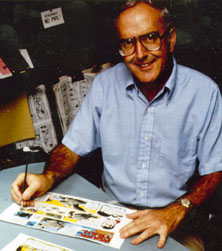
A cartoonist is a visual artist who specializes in both drawing and writing cartoons or comics. Cartoonists differ from comics writers or comic book illustrators in that they produce both the literary and graphic components of the work as part of their practice. Cartoonists may work in a variety of formats, including booklets, comic strips, comic books, editorial cartoons, graphic novels, manuals, gag cartoons, storyboards, posters, shirts, books, advertisements, greeting cards, magazines, newspapers, webcomics, and video game packaging.

The Phantom is an American adventure comic strip, first published by Lee Falk in February 1936. The main character, the Phantom, is a fictional costumed crime-fighter who operates from the fictional African country of Bangalla. The character has been adapted for television, film and video games.
A comic novel is a novel-length work of humorous fiction. Many well-known authors have written comic novels, including P. G. Wodehouse, Henry Fielding, Mark Twain, and John Kennedy Toole. Comic novels are often defined by the author's literary choice to make the thrust of the work—in its narration or plot—funny or satirical in orientation, regardless of the putative seriousness of the topics addressed. While many novels may contain passages or themes that are comic or humorous, the defining characteristic of this genre is that comedy is the framework and baseline of the story, rather than an occasional or recurring motif. Literary scholars distinguish textual analysis on this basis; the theory being that a story by Mark Twain that is a satirical critique in its very origin, for example, must be understood differently than a more literal novelistic plot. American comic books first gained popularity in the 1930s, and their popularity has fluctuated over the years. Recently, the market for comic books has been expanding. Print and digital comic book sales are increasing. From Spider-Man to The Avengers to Wonder Woman, blockbuster films are introducing people to comic book superheroes and stories, which is increasing the readership. When writing comic books and graphic novels, it is essential to understand the distinction between comic books and graphic novels, as well as the demographics of the target audience. A comic book is ″a magazine containing sequences of comic strips″ The average modern comic book contains thirty-two pages, with twenty-two pages of comics and ten pages of advertisements. The standard page size is 6.625" x 10.25", with four to six panels per page. There are numerous types of comics, such as miniseries, one-shot, and ongoing. Four to six issues comprise a mini-series. A one-shot comic book is twenty-two pages long and contains an entire story. An ongoing comic is one that does not have a predetermined ending and continues until it is discontinued.

Ziauddin Sardar is a British-Pakistani scholar, award-winning writer, cultural critic and public intellectual who specialises in Muslim thought, the future of Islam, futurology and science and cultural relations. The author and editor of more than 50 books, Prospect magazine has named him as one of Britain's top 100 public intellectuals and The Independent newspaper calls him: 'Britain's own Muslim polymath'.

Moonstone Books is an American comic book, graphic novel, and prose fiction publisher based in Chicago focused on pulp fiction comic books and prose anthologies as well as horror and western tales.
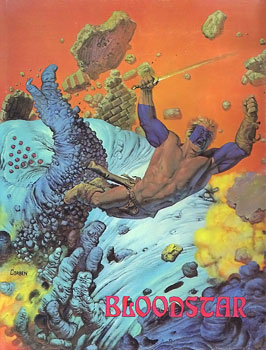
Bloodstar is an American fantasy comic book. Possibly the first graphic novel to call itself a “graphic novel” in print, it was based on a short story by Robert E. Howard, the creator of Conan the Barbarian, and illustrated by fantasy artist Richard Corben. The book was published by The Morning Star Press in a limited signed and numbered edition.
Oscar Zárate is an Argentine comic book artist and illustrator. Zarate studied architecture and had a successful career in advertising in Argentina. He moved to Europe in 1971 and began to work in earnest as an illustrator. He has drawn for the UK comics magazine Crisis. In the Introducing... and ...For Beginners book series he illustrated texts written by Richard Appignanesi, Alexei Sayle, Dylan Evans, J P McEvoy, Angus Gellatly, Rupert Woodfin and Christopher Marlowe. He is perhaps best known in the United States as the artist for the graphic novel A Small Killing written by Alan Moore, one-shot story about a once idealistic advertising executive haunted by his boyhood self.
Bart Dickon is a character created by artist and writer Borin Van Loon. Dickon, styled as 'The Ideologically-Sound Secret Agent', first appeared in comic strip form in the British publication 'Brain Damage' in the late eighties. This surrealist collage comic strip was entitled 'A Severed Head'. This continued briefly in 'Talking Turkey', then as a regular feature in the rock/culture fanzine Sun Zoom Spark.
Comics studies is an academic field that focuses on comics and sequential art. Although comics and graphic novels have been generally dismissed as less relevant pop culture texts, scholars in fields such as semiotics, aesthetics, sociology, composition studies and cultural studies are now re-considering comics and graphic novels as complex texts deserving of serious scholarly study.
The Introducing... series is a book series of graphic guides covering key thinkers and topics in philosophy, psychology and science, and many others in politics, religion, cultural studies, linguistics and other areas. Books are written by an expert in the field and illustrated, comic-book style, by a leading graphic artist.
Anglo-American Publishing was a Canadian comic book publisher during the World War II era. While they published a number of Canadian creations, they also printed Canadian reworkings of scripts bought from American publisher Fawcett Comics.

The wordless novel is a narrative genre that uses sequences of captionless pictures to tell a story. As artists have often made such books using woodcut and other relief printing techniques, the terms woodcut novel or novel in woodcuts are also used. The genre flourished primarily in the 1920s and 1930s and was most popular in Germany.

Richard Appignanesi is a Canadian writer and editor. He was the originating editor of the internationally successful illustrated For Beginners book series, as well as the author of several of the series' texts. He is a founding publisher and editor of Icon Books. He was founding editor of the Manga Shakespeare series. He is a former executive editor of the journal Third Text, and reviews editor of the policy studies journal Futures.
Celebrity comics are comics based on the fame and popularity of a celebrity. They are a byproduct of merchandising around a certain media star or franchise and have existed since the mass media and comics came into existence in the 19th century. Celebrity comics are usually not held in high esteem by critics, because of their purely commercial nature. They are solely created to capitalize on media trends and therefore published so quickly and cheaply that drawings and narratives tend to be of very low quality.
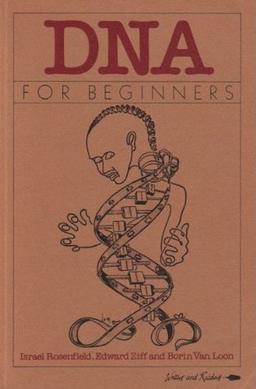
DNA for Beginners, republished as DNA: A Graphic Guide to the Molecule that Shook the World, is a 1983 graphic study guide to DNA written by Professor Israel Rosenfield from the City University of New York with Professor Edward Ziff from the New York University School of Medicine, and illustrated by Borin Van Loon. The content of the book is about the discovery and importance of DNA, examining the impact of DNA research on society and discussing its significance in history and for the future of life on Earth. The book, according to its authors, "combines humor, scientific depth, and philosophical and historical insights." in the hope that, "it will interest a wide range of readers."
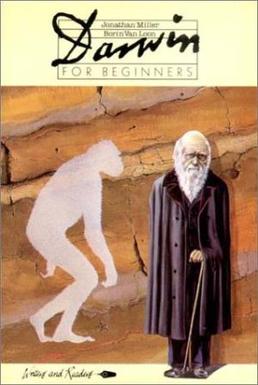
Darwin for Beginners, republished as Introducing Darwin, is a 1982 graphic study guide to Charles Darwin and Evolution written by Dr. Jonathan Miller and illustrated by Borin Van Loon. The volume, according to the publisher's website, "unravels Darwin’s life and his contribution to biology, and traces the path from his scientific predecessors to the later modifications that his own evolutionary theories required."
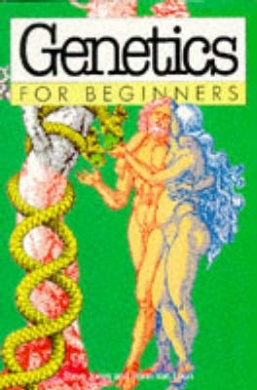
Genetics for Beginners, republished as Introducing Genetics, is a 1993 graphic study guide to Genetics written by Steve Jones and illustrated by Borin Van Loon. The volume, according to the publisher's website, "takes readers on a journey through this new science to the discovery of DNA and the heart of the human gene map," and, "gives us the information," to, "make moral decisions where genetics plays a part."

Introducing Evolution is a 2001 graphic study guide to Evolution written by Dylan Evans and illustrated by Howard Selina. The volume, according to the publisher's website, "provides a step-by-step guide to ‘Darwin’s dangerous idea’ and takes a fresh look at the often misunderstood concepts of natural selection and the selfish gene."
References
- 1 2 biography, Introducing Media Studies (Icon Books, 2000): "... Van Loon was born on an East Anglian mountainside as Queen Elizabeth II assumed the throne."